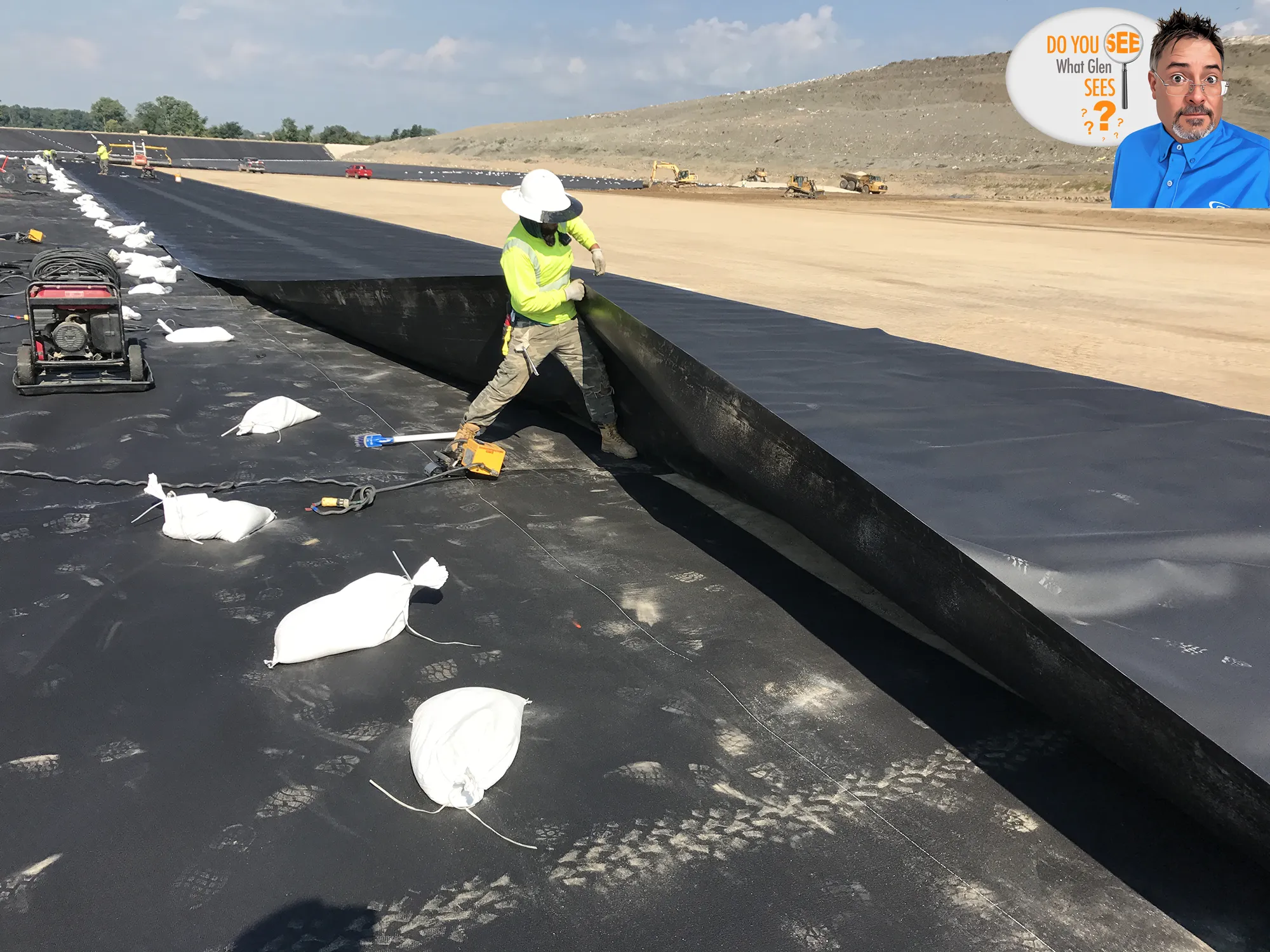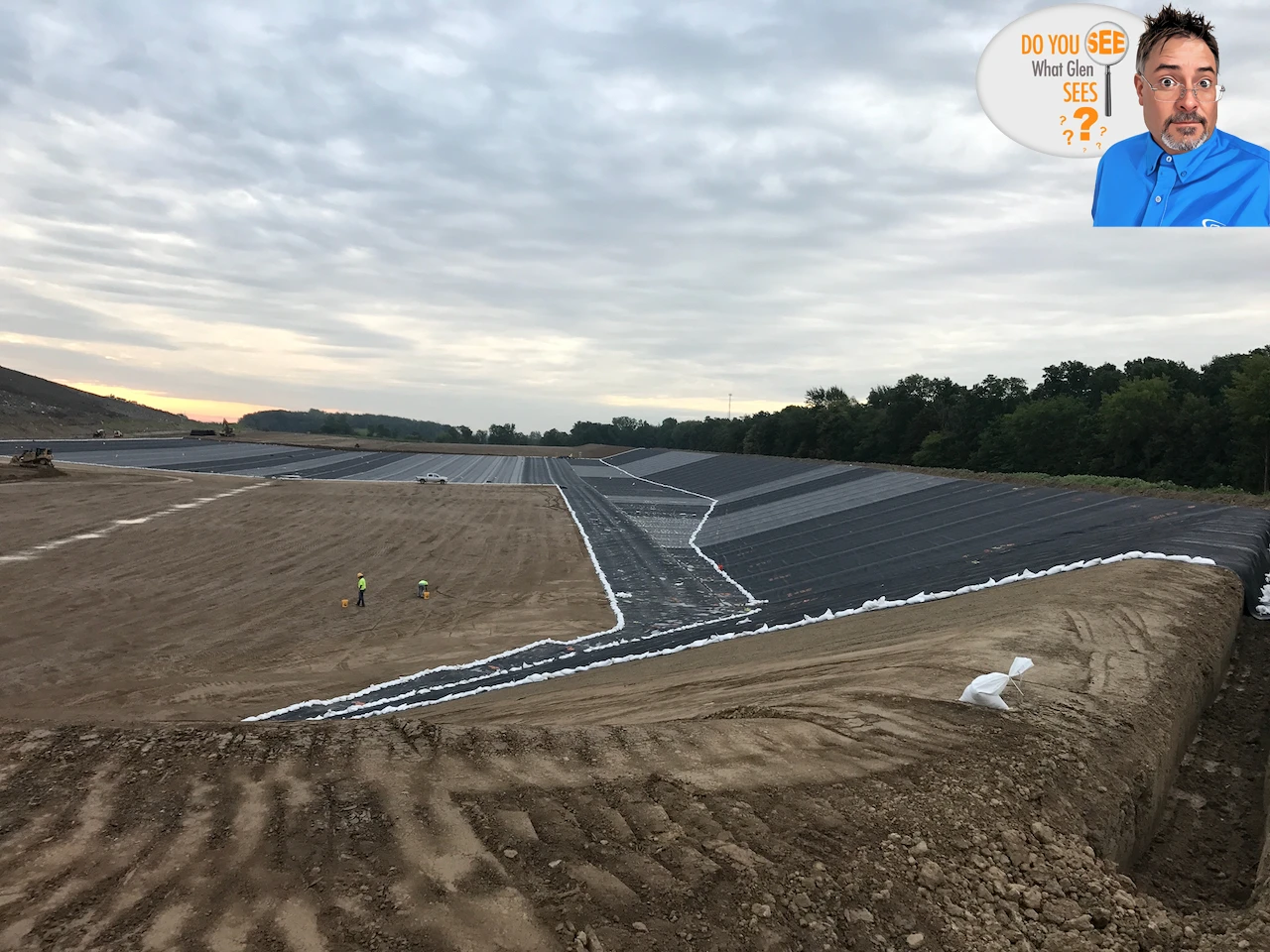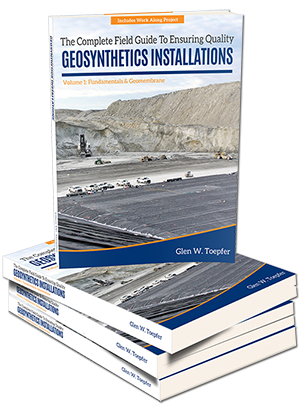First, the answer to Vol. 26 (last week).
Again, you nailed this one!!! There are two primary takeaways I want to share with you: 1) the installer is prioritizing speed over safety; and 2) the installer is prioritizing speed over quality.
Mark correctly pointed the lack of ballast on the long panel being lifted up, which to me becomes the number one issue because it is safety related. More and more installation crews seem willing to gamble with safety, especially when it comes to ballasting material. Obviously, the ballast on the floor panel over the slope panels would inhibit the welding crew being able to complete their seams but there is no ballast at all on this panel other than the people and equipment over 100’ away, and that isn’t enough. Usually an installer will at least put some ballast on the leading edge before pulling the next panel. I believe that two things can help prevent workmanship like this: 1) A comprehensive safety plan submitted by the installer for approval during the bidding process; and 2) CQA with work-stop authority. While both of these requirements are fairly common in the energy sector, they unfortunately are often missing from other sectors, such as solid waste.
Moving on to the quality issues (which also could result from a lack of ballast), most of you caught the excessive overlap/waste, the welding machine still running, the dirty conditions warranting further cleaning of the geomembrane, and the lack of ballast. As Brian and Marcos pointed out, there obviously has been vehicle traffic (approved ground pressure) on the geomembrane warranting further inspection around the tire tracks.
A couple of you commented correctly that this is the transition from slope to floor where the panel being lifted is a change in direction. If you look closely where the welding machine is, you can see a chalk line indicating where the slope panels will be trimmed. The installer finished the slope welds then trimmed the slope panels and flipped the material such that the slope panels properly shingled over the floor panels. Additionally, the sump is at the far end of the photo (beyond the spreader bar) so the installer welding downslope was correct for the shingling towards the sump.
The excessive waste seemingly could have been avoided with better planning on the slope panel length. While it can be used for repairs and trial welds, now it is dirty and requires additional cleaning/inspection if used.
Diligence is required to ensure that the scrap material is removed from below the geomembrane. In this case, there was not going to be an electrical leak location survey performed, but in instances where that will be performed, scraps below the geomembrane will inhibit the effectiveness of locating a hole in those areas when relying on the underlying subgrade as part of the electrical circuit.
Also a shout out for the good: proper safety equipment is being worn, the use of a spill pan below the generator in the foreground, the slope/floor tie-in is greater than the required ten-foot minimum from the toe of the slope, and proper shingling is being performed.
In these blog posts, Do You See What Glen Sees, I will present a photograph or short video related to earthwork or geosynthetics construction and have you identify the significance of what you’re seeing.
It could be things being done correctly or incorrectly. Primarily, these will be things that impact quality.
In addition to my blog, I’ll post this content on X and LinkedIn. You can post your response on one of those two.
I’ll give you my thoughts on each photo or video when I post the next installment.
Do you see what I see? Or did you find something I missed? I’m excited to find out!

Here is the next installment. Take a good look. Do You See What Glen Sees?
Welcome to volume #27 of Do You See What Glen Sees?! I love photographs like this because everything seems so peaceful, yet when you look closer, you’ll see there is a lot to comment on here.
I’m anxious to hear what you see!





